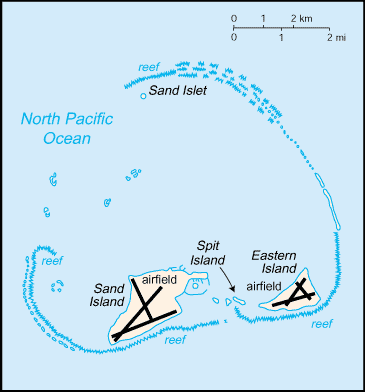
|
Midway Islands
Background:
The US took formal possession of the islands in 1867. The laying of the
trans-Pacific cable, which passed through the islands, brought the first
residents in 1903. Between 1935 and 1947, Midway was used as a refueling stop
for trans-Pacific flights. The US naval victory over a Japanese fleet off
Midway in 1942 was one of the turning points of World War II. The islands
continued to serve as a naval station until closed in 1993. Today the islands
are a national wildlife refuge. From 1996 to 2001 the refuge was open to the
public. It is now temporarily closed.
|
|
People:
Population: No indigenous inhabitants; approximately 40 people make up the
staff of US Fish and Wildlife Service and their services cooperator living at
the atoll.
|
|